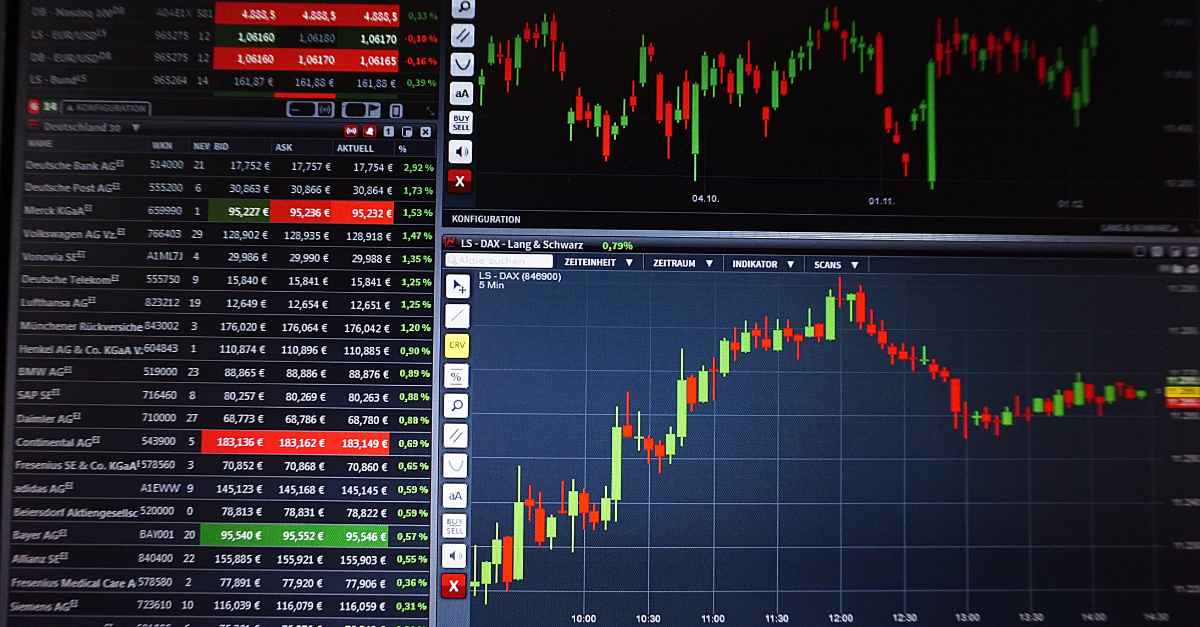Friday Jun 21 2024 06:38

12 min

The Aroon Indicator is not merely another trend-following tool; it is a nuanced indicator that can provide insightful data on the strength and potential direction of a trend.
When I first stumbled upon the Aroon Indicator, I was intrigued by its unique approach to capturing market momentum and its potential to sharpen my trading strategies.
In this comprehensive guide, I will take you through the intricacies of the Aroon Indicator. You will learn about its composition, how it functions, and how to interpret its signals effectively.
I'll also share some strategies for integrating the Aroon Indicator into your trading arsenal, discuss its limitations, and provide tips for optimising its use.
By the end of this article, you will have a deeper understanding of the Aroon Indicator and how to leverage it for better trading success.
The Aroon Indicator is a technical analysis tool used to identify trend changes in the price of an asset and to ascertain the strength of a trend.
Developed by Tushar Chande in 1995, the name 'Aroon' is derived from the Sanskrit word 'Aruna', meaning 'dawn's early light'. This is fitting, as the indicator aims to detect the birth of a new trend, much like the first light of daybreak.
At its core, the Aroon Indicator is composed of two lines: the Aroon Up and the Aroon Down. These lines measure the time elapsed between the highest and lowest prices over a given period, typically 25 periods.
To calculate the Aroon Up, one identifies the number of periods since the price last recorded a 25-period high. Similar procedures apply for the Aroon Down but with the lowest prices. The results are then expressed as percentages, with values ranging from 0 to 100.
The brilliance of the Aroon Indicator lies in its simplicity and the valuable information it provides. When the Aroon Up line is high (close to 100) and the Aroon Down line is low (close to 0), it suggests the beginning of an upward trend.
Conversely, when the Aroon Down line is high and the Aroon Up line is low, it indicates a potential downward trend. A simultaneous high reading of both lines indicates a strong trend, while low readings of both suggest a consolidating or range-bound market.
The Aroon Up line is a reflection of the strength of a bullish trend. It is calculated by identifying the number of periods that have passed since the price last reached its highest point over the selected timeframe.
The closer the Aroon Up line is to the 100 level, the more recent the high, indicating a strong uptrend. If the Aroon Up remains persistently high, it signals that the asset is consistently making new highs, reinforcing the bullish sentiment.
Conversely, the Aroon Down line measures the strength of a bearish trend. It calculates the number of periods since the asset's price recorded its lowest point. A high Aroon Down value, nearing the 100 level, suggests a fresh low and points to a strong downtrend.
A persistently high Aroon Down line indicates continuous new lows, thereby confirming the bearish trend.
An extension of the Aroon Indicator is the Aroon Oscillator, which is simply the difference between the Aroon Up and the Aroon Down lines.
This oscillator fluctuates between -100 and +100, with positive values indicating a potential uptrend and negative values suggesting a downtrend. The Aroon Oscillator can be particularly useful for identifying trend strength and potential reversals.
Understanding these components is essential for interpreting the Aroon Indicator's signals accurately. Each element provides a piece of the larger puzzle which is the prevailing market trend. By analysing these components collectively, you will be able to gain a clearer picture of market dynamics and make more informed trading decisions.

Interpreting the signals of the Aroon Indicator requires careful observation of the Aroon Up and Aroon Down lines' behaviour. When the Aroon Up crosses above the Aroon Down, it is often considered a bullish signal, suggesting that an uptrend may be developing.
Conversely, when the Aroon Down crosses above the Aroon Up, it could be a bearish signal, indicating a potential downtrend.
Another critical signal is when either the Aroon Up or Aroon Down reaches the 100 level, as this indicates a strong trend in the corresponding direction. If both lines are hovering around the 50 level, it often means the market is indecisive or consolidating.
Additionally, when both lines are low (below 50) and parallel, it may suggest a lack of trend or a sideways-moving market.
It is also important to pay attention to the angle and separation of the Aroon lines. A steep angle indicates a strong trend, while a narrow separation can signal a weakening trend or a possible trend reversal. These nuances in the Aroon Indicator's signals have provided me with valuable insights into market momentum and potential shifts in trend direction.
The Aroon Indicator excels at identifying the start and strength of trends. When using it for this purpose, I look for the Aroon Up line to cross above the 70 level as an early sign of a potential uptrend. If the Aroon Down line simultaneously drops below the 30 level, this reinforces the bullish trend signal.
For downtrends, I seek the opposite scenario: the Aroon Down line crosses above 70 while the Aroon Up line falls below 30.
In addition to these signals, the duration for which the Aroon lines remain above or below the aforementioned levels is crucial.
A prolonged period suggests a more established trend, increasing the confidence in the trend's sustainability. I have found that combining the Aroon Indicator with other forms of analysis, such as chart patterns or volume indicators, can further validate the identified trends.
One of the most effective trading strategies I've developed using the Aroon Indicator involves combining it with other technical tools. For instance, when the Aroon Indicator suggests a strong trend, I look for confirmation from moving averages or the relative strength index (RSI). If multiple indicators align, it increases the probability of a successful trade.
Another strategy is to use the Aroon Indicator for stop-loss placement. If I enter a trade based on an Aroon signal, I might place my stop-loss just beyond the most recent low or high that triggered the Aroon signal. This ensures that I am only in the trade while the conditions that justified my entry remain intact.
Moreover, I employ the Aroon Indicator to refine my entry and exit points. For example, I may enter a long position when the Aroon Up crosses above 70 and exit when it falls back below 50, or vice versa for short positions. This approach has helped me capture the most robust parts of a trend while avoiding potential reversals.

While the Aroon Indicator is a valuable tool, it is not without its limitations. One significant consideration is that, like all indicators, it is based on historical data and therefore can be prone to lag. This means that the signals it generates may sometimes be delayed, potentially leading to missed opportunities or late entries.
Another limitation is the risk of false signals, which can occur during periods of market consolidation or when the price moves sideways. During such times, the Aroon Indicator may generate signals that suggest a trend where none exists.
To mitigate this, always use the Aroon Indicator in conjunction with other analysis techniques to confirm signals before acting on them.
Additionally, the choice of the look-back period can greatly influence the Aroon Indicator's sensitivity. A shorter period may lead to more frequent signals but with a higher likelihood of false positives.
A longer period may provide more reliable signals but at the expense of timeliness. It's essential to backtest and optimise the look-back period to align with your trading style and objectives.
To optimise the use of the Aroon Indicator, I've learned to adjust its settings according to the asset I am trading and the prevailing market conditions.
For assets that exhibit more volatility, I might use a shorter look-back period to capture changes more quickly. For less volatile assets, a longer period may be more appropriate to filter out market noise.
Another tip is to use the Aroon Indicator on multiple timeframes. By analysing both short-term and long-term charts, you can gain a more comprehensive view of the market's trend dynamics.
This multi-timeframe approach has often provided me with a clearer perspective on the direction and strength of trends.
Furthermore, maintaining a disciplined risk management strategy is crucial when trading with the Aroon Indicator. Always determine your risk tolerance and set stop-losses to protect your capital.
No indicator is foolproof, and the Aroon Indicator is no exception. Using it within a well-thought-out trading plan can greatly enhance its effectiveness.
For those interested in delving deeper into the Aroon Indicator, numerous resources are available. Books on technical analysis often contain chapters dedicated to the Aroon Indicator, providing insights into its development and applications.
Online trading forums and educational websites are also valuable sources of information, offering tutorials, discussions, and examples of the Aroon Indicator in action.
Additionally, many trading platforms include the Aroon Indicator as part of their suite of technical analysis tools. Practising with the indicator in a simulated trading environment can be an excellent way to become familiar with its nuances.
Moreover, attending webinars or enrolling in courses that cover the Aroon Indicator can help you learn from experienced traders and analysts.
The Aroon Indicator has been an indispensable part of my trading toolkit, offering a robust method for identifying and confirming trends.
Its unique approach to measuring the time elapsed since the most recent highs and lows provides distinct insights into the strength and direction of market movements.
While there are limitations to its use, proper application and a comprehensive understanding of its signals can lead to enhanced trading performance.
By sharing my experiences and knowledge of the Aroon Indicator, I hope to demystify this powerful tool and encourage other traders to explore its potential. With practice, patience, and a commitment to continuous learning, the Aroon Indicator can be a valuable ally in the quest for trading success.
Get a free demo account and practice trading CFDs with no risk!
When considering “CFDs” for trading and price predictions, remember that trading CFDs involves a significant risk and could result in capital loss. Past performance is not indicative of any future results. This information is provided for informative purposes only and should not be considered investment advice.